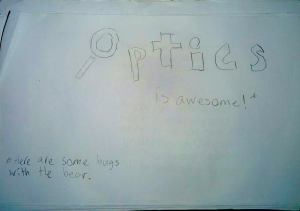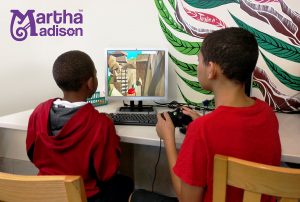Reimagine Learning
Why Classroom Playtesting Sessions Are Required
Making videogames for a living is awesome!
I’ve helped create and shape videogames for many years now, and I don’t think I’ll ever tire of working with talented, creative people who share my passion and want nothing more than to build something that will knock your socks off. Game development can also be really, really difficult as well. One of the most challenging aspects of making a good game is the fact that, as content creators, we never actually have full control over the content once the game is done and in the hands of consumers. We build the framework and lay the ground rules, but the details are handled by the individual players.
This is a unique challenge for videogame production, as compared to other creative pursuits such as filmmaking, book-writing, or painting. Because the consumer of a game has a certain level of control over the experience, it is impossible to foresee all the possible ways in which players will interact with our games. Educational games add an additional layer of complexity, since we have to ensure players not only have fun with our games, but must retain the information as well. This leads to one of the most important questions in our field: how can we ensure our games are fun and perform well, when we cannot even begin to fathom all the different ways in which players will interact with them?
The answer: Testing!
Testing, testing, and more testing. Often, when a game is little more than a shared idea, some quick sketches and some text in a Word doc, we’ll create a smaller, basic version of the game on paper – complete with cardboard cutouts meant to represent characters and moving objects – and have people play and tell us what they think. We want to hear everything, the good the bad and the ugly. The ideas may sound good in our 
heads when we’re coming up with them, but putting a physical version of those ideas in front of new people can quickly surface problems we hadn’t thought of. Even in this simple form, testing can already help us validate our early ideas.
As development of the game progresses, we’ll work with teachers and school administrators to schedule time for students to play early, unreleased builds of our games in their classrooms. We ask the students to play for a set period of time and write up their thoughts afterwards. While those thoughts are invaluable and help shape the design of current and future products, the best data comes from simply watching HOW people play the game.
Different members of the development team will attend the in-class sessions and observe the students as they play. Every member of the team will usually have unique takeaways from the session based on their discipline. Our programmers want to ensure the game runs and performs well. Game designers are concerned about how enjoyable the game mechanics are for the players. Learning designers want to make sure we can prove that students are picking up and retaining the concepts the game explores. Artists are concerned about the clarity of important visual elements and the overall look of the game. And producers are trying to figure out how we’re going to prioritize all this feedback, distill it into actionable tasks, and still make our release date.
 Classroom playtesting sessions can be slightly hectic, as we’re trying to fit a lot into a 40-minute period, but the results have always been worth the chaos. We’ve never left a session thinking “those students all played the game exactly the way we expected”, and always leave with a stack of notes and ideas on how to make improvements of all sizes. After we’ve worked that feedback into our game, we’ll test all over again to verify that we’ve made positive steps forward.
Classroom playtesting sessions can be slightly hectic, as we’re trying to fit a lot into a 40-minute period, but the results have always been worth the chaos. We’ve never left a session thinking “those students all played the game exactly the way we expected”, and always leave with a stack of notes and ideas on how to make improvements of all sizes. After we’ve worked that feedback into our game, we’ll test all over again to verify that we’ve made positive steps forward.
Some might argue that this is a lot of extra work and time that we could be spending in game development, instead. However, playtesting early and often can provide us with invaluable feedback on how to improve our game at a point in the process when we can actually do something with it. In other words, the upfront investment can save game creators a lot of heartache further down the road.
Keep your eyes peeled because next time, my fellow game creators will join me as we discuss the special considerations when testing educational games.
Categories
- Accessibility (5)
- Blog (48)
- E-Learning and Serious Games (16)
- Election Edge (8)
- Guest Blogger (1)
- Learning Design (11)
- News (12)
- Primary Sources (8)
- Remote Learning (3)
- Second Avenue Voices (13)
- Teacher Tools (10)
- Technology (4)
- Uncategorized (9)
- Webinar (11)

